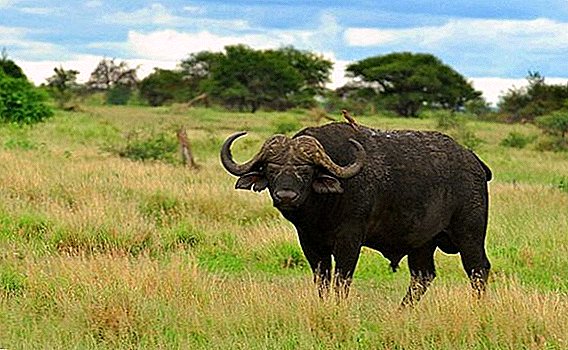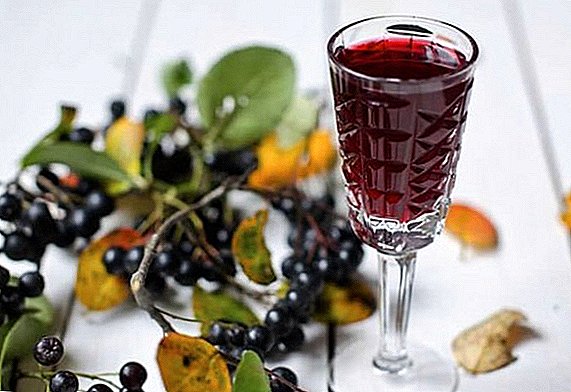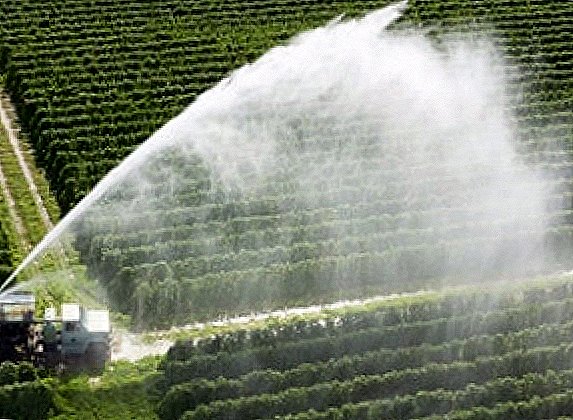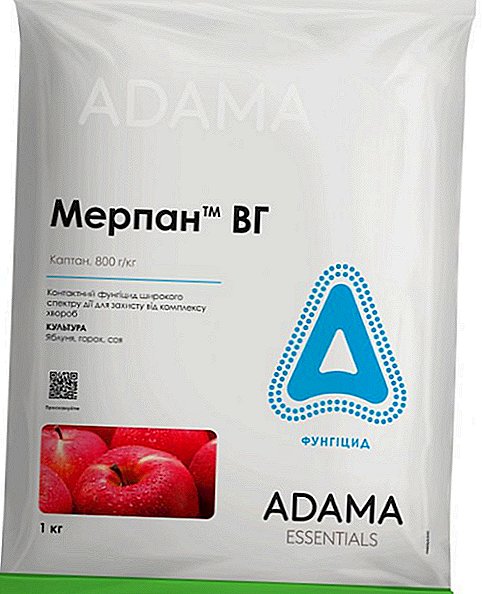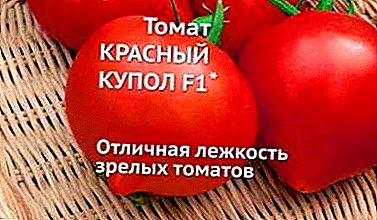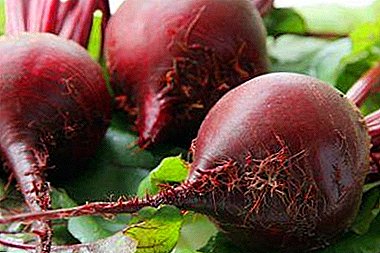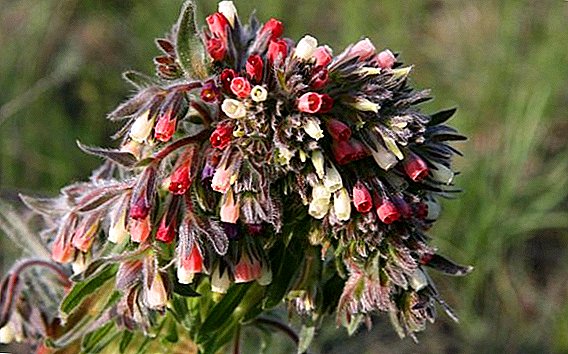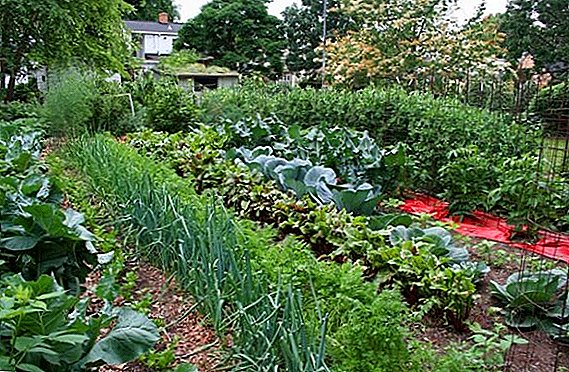 All plants from the department of Indo-seed (flowering) are divided into groups and can relate to dioecious or to monoecious specimens. This article will discuss the differences between dioecious and monoecious plants, what dioeciousness is and which plants belong to the dioecious group.
All plants from the department of Indo-seed (flowering) are divided into groups and can relate to dioecious or to monoecious specimens. This article will discuss the differences between dioecious and monoecious plants, what dioeciousness is and which plants belong to the dioecious group.
What is dioeciousness
To the group of dioecious belong copies that are endowed with female or male flowers, that is, the pistils and stamens cannot be together on the same flower and even on the same flora. In connection with this feature, the possibility of self-pollination is completely excluded. Plants can be pollinated by xenogamy - cross-pollination, due to which pollen from one specimen is transferred to the stigma of the pistils of another plant.

Thus, pollination of flowers is possible only if bees and other insects that use plant pollen carry out the process of pollination. The disadvantage of cross-pollination is the fact that half of the flowers do not produce seeds.
Important! Some scientists are inclined to think that it is possible not only angiosperm specimens, but also non-flowered ones, which are endowed with male and female generative organs, can be divided into the sex of plants and attributed to dioecious or monoecious ones. Therefore, these groups often include plants that are not prone to flowering.
What is the difference between monoecious plants and dioecious plants?
Monoecious plants are characterized by the presence of heterosexual flowers on one specimen, while dioecious flowers have only one sex on a single plant. Monoecious ones are often pollinated with the help of the wind, that is, under the influence of air, pollen from one flower is transferred to another, dioecious plants are pollinated only if pollen is transferred from a male flower to a female by insects.

Dioecious plants are presented pistachio, poplar, aspen, actinidia, sour sorrel, figs, hemp, velvet.
Monoecious plants are represented by walnuts, Echinocystis, hornbeam, quinoa, birch, hazel, corn, juniper, pumpkin, cucumber.
Dioecious representatives
In order to have an idea about dioecious plants, it is necessary to consider a brief description of some representatives of this group.
Actinidia
Actinidia is a genus of woody lianas, which number 75 species. Actinidia are common in the southeastern part of Asia and the Himalayas. They belong to the shrubs, vines, a feature of which is the tendency to fall leaves. The kidneys of these plants are all or partially hidden in leaf scars, the leaves are alternately arranged, with a jagged edge. Flowers may be small, about 1 cm in diameter or medium to 3 cm.

Most species have odorless, white flowers, sometimes there are buds with a golden yellow or orange shade. The fruit of the plant is represented by an oblong berry, yellow-green or light orange in color. The most famous actinidia is actinidia delicacy, which is known to all as kiwi.
Learn how to grow actinia in the garden and what useful properties it has.
Actinidia is planted as an ornamental plant, often used as a medicine, and the fruits of edible varieties are eaten.

In nature, actinidia grows in sparse forests, where natural penumbra is created, therefore, it is desirable to create the same conditions for home landing. Despite the fact that actinidia grows well in shaded areas, it is better to plant it on the sunny side, since fruiting occurs only with sufficient light. Actinidia feels good on soils with a low amount of nitrogen and phosphorus, does not tolerate alkaline soils. The best option is slightly acid soils. It is undesirable to plant plants on heavy clay soil.
Important! If actinidia is planted as a fruit-bearing culture, then it is necessary to combine female and male plants in one planting - for every 3 specimens with female flowers there must be at least 1 male representative.
Velvet
Velvet belongs to deciduous trees, reaches from 20 to 30 m in height, with an extensive trunk diameter of about 120 cm. The crown of the tree in the forests is highly elevated, in single plantings it is characterized by a spherical shape. The plant has ash-gray bark, with a beautiful decorative look, at young trees bark with a silver overflow. The upper layer of the bark is characterized by a velvety structure, is represented by a cork more than 5 cm thick, the inner layer of the bark has a yellow color, a specific odor. The foliage is rich green in color, the leaves are arranged alternately, the shape is similar to the leaves of ash, but with narrower plates and a characteristic unpleasant odor.

The flowers are quite small, inconspicuous, diameter - up to 1 cm, have a greenish tint, flowers are collected in paniculate inflorescences, length - up to 12 cm. Fruit ripening takes place in autumn, spherical fruits, black, brilliant, are unsuitable for consumption, characterized by a sharp unpleasant smell. Velvet can be found in Manchuria, Khabarovsk Territory, Amur and Primorye, China, Korea, Taiwan, Sakhalin, the Kuril Islands, Japan. Velvet is a relict plant, as this tree existed long before the glaciation.
Did you know? The relict plants include representatives of the flora, which were common in past geological eras.
Velvet as an ornamental plant is very common in European countries and North America, popular for planting in the regions of Central Asia and the Caucasus. Velvet is used for medicinal purposes, it is a good honey plant. Also, the bark is often used to obtain a yellow dye for dyeing various types of fabrics. A large layer of cork is used to make corks for bottle capping, used as a building material for floats, life buoys, breastplates, souvenirs. Cork from a tree is separated easily enough, without bringing harm to the tree itself. Velvet wood is characterized by a beautiful color and expressive pattern, therefore it is used for the production of furniture and decorative elements.

When choosing a place for landing velvet should be considered that the tree is long-lived, so that its roots do not harm the buildings, place the tree away from buildings. Also, if in the future you plan to build something near the tree, try to move as far as possible from the velvet, so as not to harm the roots and destroy the plant. The tree should be provided with shade, therefore it is better to plant it in the garden, suitable soil for planting is cultivated loam, not suitable for planting sandy soil.
Read also what is useful Amur velvet.
Drema
Drama is an annual, biennial, in some cases perennial, reaches a height of 80 cm. Depending on the nap age, the plant is characterized by some differences in appearance. Small specimens have oval leaves, reaching a length of 10 cm, over time, the plant appears forked stems with paired lanceolate leaves. Buds up to 3 cm in diameter are presented in the form of inflorescences and are located on the top of the stem, each bud has 5 petals, blooms from late spring to early fall, the bloom is white. Dram is common in European countries, in western Asia and in North America.

Drema is sometimes used for the production of hygiene products, as it has a large number of saponins, which in the form of solutions with agitation can form a thick, resistant foam. Drema is a fairly cold-resistant plant, therefore, capable of enduring cold and harsh winters. At present, the napping is not cultural and is not used in industry.
Important! The maximum decorativeness of drowsiness is achieved when landing on drained neutral, slightly acidic soils, a normal plant develops on dry sandy soils.
Drama grows in well-lit areas, but can tolerate light penumbra, so it is better to plant it in sunny areas. The plant does not need particularly fertile soil, grows well on ordinary garden soil, the only necessary condition is the friability of the soil.

Willow
Willow is a genus of woody plants, which includes about 550 species. Trees grow to 15 meters in height, sometimes there are species up to 40 meters. Specimens growing in the north are stunted, and in mountainous areas willows are found as stunted creeping bushes, with a minimum height of up to a few centimeters. Depending on the type of willow, the leaves can be thick, curly, bright green, or rare, penetrating grayish-green or grayish-white. The leaves are planted alternately, the lamina may be broad elliptical or fairly narrow and long, with solid or jagged edges, shiny plates.

A characteristic feature of some species is the presence of sufficiently large stipules, which develop most often in young shoots. Branched stems, branches of a plant are rather thin, flexible, prone to fragility, buds can be dark brown, red-yellow. The flowers of the willow are very small, gathered in dense inflorescences, so they are easy to see. After flowering, fruits appear - boxes with small fluffy seeds. Willow is a common plant and grows in the middle part of Russia, in North America, some species grow in the tropics.
Familiarize yourself with the nuances of growing such species of willow as: whole-leaf, white, ball, weeping, goat, dwarf.
Willow is used as a decorative specimen, also often some species are planted in order to strengthen loose soil and sand, since the root system of a tree is abundant, very developed, with numerous branches. Wood is used for the production of dishes and decorative elements. Willow is a valuable honey plant; certain species of bark are suitable for tanning leather. Wood is often used as a material for making wicker products. Willow leaves are popular in traditional medicine as a medicinal raw material.

Willow grows well on loam and sandy soils, plant a tree in an area with the most moisture-intensive soil, in a well-lit area.
Figs
Fig is a subtropical deciduous plant, belongs to the genus Ficus. The tree has a light gray smooth bark. The plant is characterized by the presence of large, alternately planted multi-lobed or separated hard leaves. Sinus leaves have generative shoots and contain inflorescences of two types - kaprifigi and figs. The kaprifigami are male flowers, they have small inflorescences, figs are female flowers with large inflorescences.

Figs are pollinated by osam-blastophagous, they carry the pollen from the male trees to the female. Fruits appear on the tree - figs, inside with lots of seeds, sweet and juicy. Depending on the variety, the color of the fruit may be yellow, blue or dark blue, often there are yellow-green fruits.
You will probably be interested to learn how to grow figs at home and in the open field, as well as read what makes figs useful.
Figs became widespread in the Mediterranean, Transcaucasia, on the southern coast of the Crimea, in Central Asia. Often the fig tree is planted in order to get a harvest of figs, which are eaten fresh, dried and canned, they are a separate delicacy, and can also be used for making jam and as an additive to other desserts. In folk medicine, fig leaves are used as a medicinal raw material.

Plant a tree in a well-lit area in the south of the plot, so that the figs are protected from strong winds. The tree prefers light loams, with good breathability.
Important! Figs are also planted as a houseplant in the apartment, it does not grow very large, but is capable of fruiting.
Hemp
Hemp is an annual bast fiber plant. It is characterized by the presence of an erect stem, rounded at the base, opposite leaf position on the upper part of the plant and with the next - on the lower part. The leaves are complex, have 5-7 leaves with a jagged edge, the base of the stem of the leaves is more than the top. The flowers of the plant are represented by inflorescences in the form of a complex spike, in place of which bivalve nutlets appear, having an ovate or elongated shape, smooth or ribbed structure, gray-green or brown in color. The plant is widely distributed throughout the world, can grow in both tropical and temperate zones.

Previously, the plant was grown in order to obtain seeds and oil from it, as well as fibers that were used in everyday life. Hemp was also used for medical purposes, recreational drugs were made on its basis. Hemp can be useful in order to produce ropes, ropes, cables, clothing, paper and thread, as the plant consists of very strong fibers.
Find out what a technical hemp is and what is made of a plant.
Hemp is quite demanding on the soil and place of growth. Therefore, before disembarking, it is necessary to create all the necessary conditions. The plant prefers well-lit areas under the open sun, the soil must contain a lot of nutrients, be moisture-consuming, since hemp does not tolerate drought.

Stinging nettle
Nettle is a perennial herb, it is characterized by the presence of strong roots and with multiple small branches. Nettle can be 30 cm to 2 m high. There are many burning hairs on the stem and leaves. The stem is grassy, on which the leaves are opposite. The lamina is represented by an ovate-heart-shaped or lanceolate form, up to 17 cm long, and up to 8 cm wide.

The edges are covered with large teeth. On the nettle, rather long inflorescences develop, on which many small greenish flowers are planted, in place of the flowers over time, the seeds appear, represented by dry, compressed yellow or brownish nuts. Up to 22,000 seeds can be produced per specimen. It is found in Europe, Asia, China, and North America.
Read about the healing properties of nettle and nettle hemp, and learn how to use nettle as a top dressing.
Nettle is a plant that is often eaten, based on it is prepared soups, borscht, salads. Used as livestock feed. In folk medicine, nettle leaves are used to prepare infusions and decoctions.

Dioecious nettle refers to weed vegetation, therefore, it can grow on any soil, especially plants are found on soils rich in nitrogen. The plant is light-loving, but can also grow well in partial shade and shadow.
Laurel
The genus Laurus refers to subtropical trees or shrubs. Laurel is an evergreen plant that reaches a height of about 15 m, with brown smooth bark and bare shoots. The crown of the tree is dense, pyramidal shape. The leaves on the shoots are planted alternately, have a solid edge, bare, simple, can reach a length of 20 cm, 4 cm wide. The leaves have a pleasant aroma, they are characterized by an oblong lanceolate or elliptical plate narrowed to the base. The color of the foliage is dark green on the upper part of the leaves, on the lower - lighter.

Laurel flowers are collected in inflorescences umbrellas, are located at the end of the branches in several pieces, in the leafy axils. The flowers are residually small, yellowish, eventually turning into dark blue fruits. Laurel grows in the Mediterranean, Transcaucasia and the Canary Islands.
Familiarize yourself with the rules for growing laurel at home, outdoors, from seeds, as well as how to propagate laurel and what properties it possesses.
Laurel is used as a spice, an essential oil used in cooking is prepared from the leaves. Also bay leaf is a medicinal raw material for the preparation of various therapeutic agents.

Laurel will best feel in a well-lit area, but can tolerate light penumbra. The plant is not demanding on the soil and tolerates drought normally. It is advisable to plant organic and mineral fertilizers in the soil before planting so that the plant develops better.
Sea buckthorn
The genus of sea buckthorn includes two species. Plants are shrubs or trees from 10 cm to 6 m in height, sometimes up to 15 m. The leaves are planted alternately, rather long and narrow, the color of the foliage is green, the surface of the plate is covered with small gray dots. Sea buckthorn blooms earlier than the leaves bloom, the flowers are small, inconspicuous. In place of the flower appears drupe, which consists of a nutlet, and receptacle. The color of the fruit has a red or orange shade, on the branch they are very thick. Sea buckthorn grows in Europe, Asia, Mongolia, China.

Плоды облепихи часто используются в качестве продукта питания, их едят сырыми, готовят напитки, масло из облепихи применяется в косметологии и медицине. Certain types of sea buckthorn are ornamental plants, they are planted to strengthen the road slopes or to create hedges. The leaves of the tree are used as tanning raw materials.
Find out which popular sea buckthorn varieties, the rules of planting, how to propagate sea buckthorn and when to collect it, what characteristics of sea buckthorn, as well as how to grow Shepherdia, what its benefits are and how sea buckthorn juice is useful for the body and how to make sea buckthorn compote.
The sea buckthorn landing area should be well lit, the tree is not afraid of direct sunlight, prefers light neutral soils, tolerates regular fertilizers well and responds to them with a rich harvest.

Mistletoe
Mistletoe belongs to the genus of semi-parasitic shrubs, which are evergreens. It is fixed on the branches of plants, over time it grows into a green large shrub. The mistletoe branches reach a length of 80 cm, the plant has opposite or whorled leaves, which are involved in photosynthesis. Water and mineral substances mistletoe receives from the plant on which it settled.

It blooms very small buds, up to 3 mm in diameter, greenish-yellow in color, a yellowish or reddish fruit appears on the site of the flower, is represented by a false berry, with sticky pulp. In nature, there are up to 70 species of mistletoe, which grow mainly in the subtropics and tropics of the African continent, in the tropics of Asia and in the north of Australia, practically throughout Europe.
Did you know? Mistletoe was used as a traditional Christmas decoration in England until the second half of the XIX century, at that time the English began to decorate the Christmas tree, which became the symbol of Christmas.
Mistletoe fruits are food for birds. Also suitable for the manufacture of glue. Traditional medicine contains extract recipes from the young leaves of the plant, used for various health problems.

Since mistletoe is attributed to parasitic plants, it is not specially grown, this specimen can parasitize on poplar, maple, pine, birch and fruit trees.
Aspen
Aspen belongs to the species of deciduous trees of the genus Poplar. The plant is characterized by the presence of a kolonovidnogo trunk, height - up to 35 m, diameter - 1 m. The tree grows very quickly, but is prone to diseases of the wood, so the duration of life is not more than 90 years. The roots go deep under the ground, abundantly growing several meters. The tree has a smooth bark of a greenish or gray color, cracks with age and changes color to darker.

Aspen has another leaf arrangement, they are represented by round or rhombic plates, up to 7 cm in length, with a sharp or blunt tip, the leaf has crested edges. The flowers are characterized by a small size, they are collected in the inflorescences of earrings, can be reddish or greenish, up to 15 cm long, bloom occurs before bud break. After flowering, the fruit forms a box, the seeds are covered with down (powder puff), thanks to which they spread over tens of kilometers. Aspen can be found near the forest and tundra, it grows in the forest and forest-steppe. There is a tree in Europe, Kazakhstan, China, Mongolia, Korea.
Read also about the medicinal properties of aspen and its bark.
Aspen is often popular as an ornamental tree, landed along the alleys, in city parks. The bark is used for tanning leather, is a source of yellow and green paint. The tree belongs to the good honey plants. Wood is used in the construction of houses, in the form of roofing material. Aspen is also used as a raw material in traditional medicine, bark and leaves are considered to be medicinal.

Aspen is better planted in well-lit areas, but it can tolerate light penumbra, is not demanding on the soil, grows well on both poor and nutritious, acidic and alkaline soils. The only requirement for the soil - it should not be dry, sandy, swampy or frozen. Aspen is also poorly tolerated by high groundwater, therefore these features must be considered when planting.
Asparagus
Asparagus is a genus of plants, which has about 210 species. Can grow in the form of grass and dwarf shrubs. The plant has well-developed rhizomes, strongly branched stems. On the stems are many needle-shaped branches. Asparagus has underdeveloped, small leaves, represented by scaly or prickly specimens. The plant blooms with small buds that are collected in single, thyroid or racemose inflorescences.

The flower has 6 petals, which are arranged in two circles. In place of the flower, a fruit is formed in the form of a berry, which contains one or several seeds. Berries are ripe red or bright orange. Asparagus can be found in the temperate climate of North America, Europe, Central Asia, Australia and New Zealand.
Did you know? Asparagus is a natural aphrodisiac. In ancient Greece, newlyweds wore wreaths from this plant on their heads for the imminent appearance of offspring, and at French wedding feasts on the table of newlyweds there were always at least three dishes with asparagus.
Asparagus is often used as a vegetable that is grown commercially for sale. Particularly valuable shoots of asparagus officinalis, which grow no more than 20 cm, have a non-distended head, in this state it is most useful for human consumption. Such shoots boil, canned, prepare salads and soups. Asparagus shoots are also used in traditional medicine, and the essence obtained from the plant is used in the manufacture of homeopathic remedies.

Asparagus is a rather demanding crop, therefore it is necessary to select a landing site very carefully, the area should be well lit, windless, better planted on the south side of the site. The plant prefers to grow on light sandy soils rich in humus.
Among the rather large vegetable family of legumes, beans confidently rank among the first types by recognition, so we recommend that you find out which are the best varieties of asparagus beans, how to grow them, than useful asparagus and asparagus beans for the body, as well as what recipes for harvesting asparagus beans for the winter.
Poplar
Poplar belongs to the genus of deciduous actively growing trees, which has 95 species. The tree is up to 50 m high, sometimes 60 m, with a trunk diameter of more than 1 m, the crown has a spherical shape. On brown-gray or dark-gray bark there are many cracks. Poplar is characterized by a strong root system, which lies on the surface and goes many meters from the trunk. The leaves of the poplar are planted alternately, the plates are lanceolate or wide oval, with mesh venation.

Flowering begins before bud breaks, small flowers are located on the inflorescences of catkins that hang from the branches. In place of the flower a box forms - a fruit that has small seeds with numerous hairs. Seeds are oblong or oblong-ovate, black or black-brown. Poplar is widespread in the northern hemisphere, in the subtropics of China, the boreal zone, in America, Mexico, East Africa.
We recommend to find out what is a white poplar, pyramidal, and what is useful black poplar.
Poplar is characterized by the presence of light white wood, which lends itself well to processing and is used as raw material in paper production. In low forest areas poplar is used as a building material. The buds of a plant can be a source for obtaining a violet dye and a leafy part for a yellow dye. Poplar is planted as an ornamental tree, for gardening alleys in cities, in addition, the tree is an excellent honey plant.

Poplar is not demanding on soils and can grow on any type of soil, prefers sunny areas. It tolerates wetlands and high groundwater levels, but is demanding for air permeability and nutritional value of the soil, therefore, when choosing a site for planting, pay attention to these features.
Pistachio
Pistachio is a genus of evergreen or deciduous trees and shrubs, which has 20 species. The plant has a bunk root system, the roots go beyond the crown at 30 m and at 15 m - in depth. The tree is characterized by the presence of a thick layer of dark gray bark, with a waxy coating on young shoots. Pistachio leaves are pinnate, have a solid edge, shiny. The flowers are small, gathered in the inflorescences of yellow, red, dark pink color, in place of which appear the fruits of the drupes, suitable for use.

The tree grows in Africa, the Mediterranean, Asia and Central America.
Did you know? For the first time, pistachio seedlings were delivered to Europe from Syria in 1 tbsp. n er Roman emperor Vitellius, the Italians liked the walnut so much that pistachios began to be actively added to various dishes.
Due to the fact that the pistachio has a dense and strong wood, it is used in the joinery, it also produces resins to produce varnishes. The leaves contain a lot of tannins used in leather processing. The most popular product of pistachio tree are pistachio nuts, which are considered valuable and useful product. Nuts are eaten by themselves or used to prepare various dishes.

Pistachio can be planted on sierozem, brown soils. The plant is light-loving, drought-resistant, loves soils that contain a lot of calcium. Plant better in sandy soil and maintain acidity at pH 7.
Find out how pistachios are useful for people and whether they can be harmful if eaten uncontrollably.
Spinach
Spinach is a genus of herbaceous plants that has three species. Is one-year-old or two-year-old, grows to a height of 50 cm, can be naked, simple or branched. The leaves are arranged in pairs, have an oval, oblong shape with a solid edge. The leaves have a smooth or rough structure, small flowers, collected in the spike-shaped paniculate inflorescences of yellow color, in place of which spherical fruits appear. Spinach grows in Iran, the Caucasus, Central Asia, Afghanistan as a wild crop, but it is also planted everywhere for cultivation on an industrial scale.

Spinach is a valuable plant that is eaten and used raw, added to salads, boiled, fried, stewed. It is used in traditional medicine, as it has medicinal properties and contributes to the treatment of certain diseases.
It will be interesting to read about: the beneficial properties of spinach for the body, the variety of varieties, it will also be useful for you to learn all about the features of growing this plant, how to grow spinach on the window sill all year round and what preparations can be made from it for the winter.
Spinach is demanding on the landing site, prefers fertile soils, therefore, it is better to plant it on the site enriched with organic matter. It grows well on loamy soils, may grow on sandy, but with the condition of regular watering.

Sorrel sour
Sour sorrel is a type of herbaceous plant of the genus Sorrel. The plant has a tap, very short and branched root, characterized by the presence of a standing stem, can reach a height of 1 m. The stalk is silver, at the base with a purple tinge.

The leaves grow from the root, they are long, petiolate, have an arrow-shaped base, a solid edge and a pronounced central vein, the plate reaches a length of 20 cm, the leaves are arranged alternately. The flowers are planted on paniculate inflorescences, have a pink or reddish color. In place of flowers appear triangular seeds, black-brown, smooth, shiny. The plant is common in North America, Asia, Europe, Western Australia.
Sorrel has a large range of healing properties, so we advise you to read how to grow sorrel, than useful sorrel is sour and how to prepare sorrel for the winter,
Sour sorrel is used as a food product, therefore it is cultivated in the form of vegetable culture. On the basis of sorrel prepare green soup, borsch, leaves are used for canning. Sorrel is used in traditional medicine, the leaves and juice can treat various diseases.

It is better to plant sorrel in a well-lit area, preferably in partial shade. Sorrel is not demanding on the soil, but still prefers light sandy or loamy soil, grows well on peat soils. Sorrel prefers to grow on air-permeable soils with low groundwater deposition.
Thus, dioecious plants are widespread throughout the world and can be represented by grass, shrubs, trees, and vines of various sizes. They are completely different, but they are united by one thing - on a single copy, female and male flowers cannot be located together. Such a feature should be taken into account when planting certain plants in order to ensure the possibility of pollination and the formation of the ovary.


